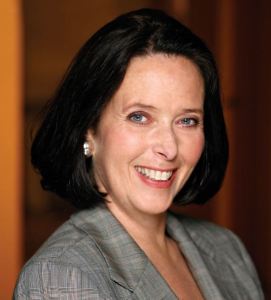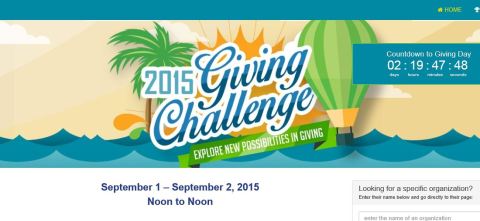Refining Outcomes Tracking: A Perspective from Forty Carrots
February 15, 2016
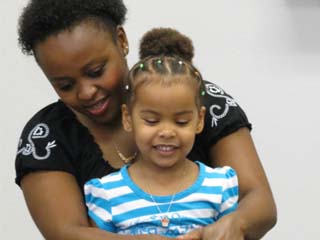 The Community Foundation of Sarasota County often uses The Giving Partner profile for Forty Carrots Family Center as a great example for nonprofits that wish to share meaningful information about their programs and services with donors and funders.
The Community Foundation of Sarasota County often uses The Giving Partner profile for Forty Carrots Family Center as a great example for nonprofits that wish to share meaningful information about their programs and services with donors and funders.
Even with its long history of successful programs and accomplishments, Forty Carrots’ team, led by executive director Michelle Kapreilian, is always looking for improvement. Together with nationally-known outcomes guide Hal Williams, the board and staff teams have embarked on an exploration to change the way they track and define program results.
Michelle recently shared five things Forty Carrots is learning from its focus on tracking achievement:
-
A results focus is a mindset change for an organization. Forty Carrots included executive staff and its board of trustees in moving to this new perspective. It then trickled down throughout the organization.
-
Moving toward tracking outcomes instead of activities is a process that involves some experimentation. Some of the changes worked as intended, but others did not. Forty Carrots took the successes and built upon them with continuous refinement. It viewed strategies that did not work as lessons for future decisions and changes.
-
A results focus does not mean that an effective program needs to change, only how the results are measured. Michelle encourages mindfulness about not disrupting qualities that are key to program effectiveness or implementing processes where clients feel a need to “perform”. The focus should remain on understanding the real results.
-
The “See and Hear” strategy can help drill down to the core of seemingly intangible and hard to measure outcomes. This involves looking at what you see and hear to identify whether a key indicator of success is present or absent, or that a behavior change has taken place.
-
Discussions about the technology necessary to track your new outcome measures should be part of your organization’s investment. It begins with a clear understanding about what needs to be tracked. Understanding the technology choices available, investing in the right software, and staff training follow.
Seven local agencies in Sarasota are in the midst of finalizing a “small change project” with Hal Williams, in which they have taken an important program and refined the way they track and define outcomes.
The Forty Carrots case study and Michelle’s willingness to share it have helped our foundation and the participating agencies appreciate the process of this kind of work. It requires patience and commitment from all levels of a nonprofit team—from its volunteer leaders to the program staff.
We’ll be sharing more soon.
A Donor Walks Into the Apple Store…
January 23, 2016
 A month ago, I woke up in the morning to find my iPhone in a terrible state of affairs on the floor beside the bed.
A month ago, I woke up in the morning to find my iPhone in a terrible state of affairs on the floor beside the bed.
Apparently, in the midst of a nightmare I had flung my phone across the room. There was no protective case on it, leaving the screen shattered.
Not two hours later, I was waiting patiently in line at the Apple Store—anxiously hoping someone could repair the screen and forgo an expensive purchase of a new device. I also happened to be thinking…about outcomes. Embarrassing.
“If Apple was a nonprofit, providing a charitable service to me,” I thought, “what would I hope for in this experience?” Exactly what I hoped for as a paying customer at one of the most successful companies in history: a result.
Guess which question mattered most to me that day:
- Did my Apple representative care about me?
- Did my representative empower me to learn about the value of a protective case for my phone and explain the psychology of why I neglected to have a case in the first place?
- Was the Apple Store a place where I felt comfortable sharing how the phone accident made me feel?
- Did they actually fix my phone?
Questions similar to 1, 2, and 3 are often found lurking on evaluations forms for nonprofit services. It’s not that these measures of satisfaction aren’t important, but they do not get to a result.
My purpose in spending time on a Saturday at the Apple Store was not to have a satisfying experience with the employees or to be educated about protecting my screen–not even to shop at UTC for a few hours while waiting. I needed to have my phone repaired.
Smart donors are asking the same question of nonprofits delivering important services. They want to know how their dollars will actually impact another person, move the needle on a cause, or change the community.
The Community Foundation of Sarasota County is helping donors make investments where they can make the biggest difference through their philanthropy. We encourage donors to look at performance instead of being hyper-focused on reasonable administrative costs required to achieve good results.
Through the program section in The Giving Partner, we find meaning in great examples set by organizations that are specific about their achievements. They set an expectation for talking more about results, instead of focusing on lists of activities that may or may not produce results.
Think about it the next time you’re shopping for a new product or service provider. I bet you will select a company that delivers the result you’re looking for. Any laundry list of activities they provide will be irrelevant unless the final outcome is what you had in mind.
What happened to me at the Apple Store that day? The tech team couldn’t match a new screen to the brains of my phone. So they gave me a new phone. Nice!
The activities they carried out behind the scenes to reach this outcome mattered little to me. I left feeling “satisfied” with the nice people who helped me. More importantly, I left with an iPhone that worked—a result I was happy to invest in.
Outcomes guide Hal Williams is currently working with a group of seven local organizations on a small change project through the Community Foundation of Sarasota County to help redefine (and simplify) the way they track outcomes for a specific program. Look for case studies shared on this blog.
-Susie Bowie
Community Foundation of Sarasota County
Anecdotal stories abound about non-profits that have raised significant money. “ABC organization receives largest gift in its history.” “Generous donor bequeaths biggest gift to her alma mater.” “Charity X endowment grows by double digits.” You get the idea.
These accomplishments create tantalizing headlines that singularly focus on highlighting a non-profit’s new revenue. Yet as successful fundraisers well know, there’s always more to the story than what’s mentioned in the headline and much more work involved that got them to that success.
As President of the AFP Southwest Florida Chapter, our association is committed to advancing ethical and effective fundraising. We recognize that fundraising is a long-term investment that needs daily shepherding. If done well – thoughtfully, consistently, and strategically – then non-profits will transition from survivability to thrivability.
Listed below are ten things each of us should know about successful fundraising.
-
Have a Vision:
Be willing to dream big and create ambitious goals. As Jim Collins, author of Built to Last: Successful Habits of Visionary Companies, remarks “Have a big, hairy audacious goal (BHAG) and seek progress toward an envisioned future.” Donors are inspired by a compelling vision and they want to see your vision in action which is evidenced by your passion. -
Create a Plan:
A recent post in the Stanford Social Innovation Review highlights research that suggests the clearest predictor of successful fundraising is the existence of a formal fundraising plan. Creating a clear plan of action with quantifiable metrics, timelines, and goals will keep the lens clear and help you remain focused on your objectives. As Stephen Covey says, “Begin with the end in mind.” Don’t let your plan get dusty on a shelf, use it! And, if you don’t have a plan, begin one today. It’s really that important. -
Master the Art of Communication:
People remember 10%-30% of what they hear, and 80% of what they will say so allow your donors to share their story before you tell them your story. Before you know it, they will be telling your story if you actively listen to them. Isn’t it ironic that the word listen has the same letters as the word silent? -
Value the Relationship:
It’s important to understand fundraising trends and general fundraising principles, but it’s equally important to understand your donor as a remarkable individual. They are each wonderfully unique, thus understanding their individual values and giving preferences is key. Giving USA reports that in 2014, 72% of all giving was by individuals and 8% came from bequests. That’s a whopping 80% of all giving that can be attributed to the individual donor. In short, this is an area worth your time and investment. -
Appreciate the Donor Cycle:
Solicitation is only one part of fundraising. Sure, it’s an essential part of raising money, and no organization will be successful without it. But successful fundraising strategies include all components of the donor cycle (identification, qualification, cultivation, solicitation, and stewardship). This moves management system requires the element of time, and gifts will harvest at varying rates. Just remember, long-term fundraising within a true philanthropic culture will not be effective if the donor only hears from you when you are asking for money. -
Leverage Fundraising as a Shared Responsibility:
Philanthropic support thrives when fundraising is a shared responsibility. With the changing philanthropic landscape and heightened sophistication of donors, the most successful organizations are now expanding beyond the development staff and involving their entire community – the CEO, board members, staff, and even volunteers – in their fundraising efforts. -
Recognize Fundraising is a Relational Business:
If you’re dedicated to successful fundraising, then you already “get this.” Yet, this simple term is often misunderstood. It is a fundraising approach that puts the donor right in the center. That’s right, the donor. If you’ve followed tips 1-6, then you’re already well on your way. The donor will notice your authenticity and transparency. Focusing on the donor relationship means that you are also willing to invest in the personal touch. Start your day by writing handwritten notes, thank your donor more than once, and by all means, don’t under-estimate the power of a personal face-to-face meeting. A donor-centered approach will pay dividends. -
Collaborate with Others:
Collective impact is a buzz word these days, and for good reason. Donors want to see more shared vision and we need to perpetuate generosity for our community’s benefit, so collaborating just makes sense. No singular organization “owns” a donor anyways so be willing to work together and exchange ideas. -
Remain Flexible and Adaptable:
If you truly have your donor’s best interest at heart, then be patient, flexible and adaptable when they respond with a “no” to an ask. Timing is very important. Use your discernment. Perhaps they need more time to understand your mission, or maybe they have other pressing needs to address. How you respond to a “no” can speak volumes to your donor. Until they tell you “No, not ever,” continue your efforts with them. They will appreciate your long-lens view, and the donor relationship will be preserved. -
Be Your Best Professional Self:
Ethics and professional knowledge matter and donors value the consummate professional who is committed to doing the right thing. It builds trust. In order to serve our donors well, we need to invest in our own professional development. Commit to taking continuing education courses, obtaining professional certificates, or attending conferences and seminars. Read professional fundraising books, follow fundraising blogs, and join AFP! We look forward to seeing you!
Jennifer Vigne, CFRE is the president of the Association of Fundraising Professionals Southwest Florida Chapter and the executive director of the Education Foundation of Sarasota County.
 The new year is all about starting fresh and finding new perspective. Setting goals — both personal and professional — is only natural. But there’s always a catch. The trick is creating goals you can keep instead of falling into the pesky two-week resolution trap. (We know — we’ve been there, too.)
The new year is all about starting fresh and finding new perspective. Setting goals — both personal and professional — is only natural. But there’s always a catch. The trick is creating goals you can keep instead of falling into the pesky two-week resolution trap. (We know — we’ve been there, too.)
The same is true in the social sector. There’s no better time than now to refresh and revitalize your nonprofit’s communications strategy. But with limited time and resources, where do you start and what steps can you take to succeed?
We’re sharing our top five things to know as you begin this new year and hope it will help you set the tone for successful nonprofit communications in 2016.
- Learn to write it down. We’re not talking about writing a thesis. A one or two-pager can really help everyone in your organization understand your communications plans for the new year. Writing it down — whatever it is –shows that you care enough to develop something with goals that you can measure and have thought through some ways to make it happen.
- Prioritize strategy before tactics. Does this send a shiver down your spine? It’s like when you’re told to eat more vegetables. Most people don’t want to do it and prefer to skip to the cupcakes instead.Strategy is the building block for everything — it guides what tactics you choose and gives you the best chance to meet your communications goal. Strategy is about the cohesion of the timing of what you want to share, how to say want you want to say and who to inform before the entire community hears about your nonprofit’s announcement.
- Get to know your audiences. Your audience is donors, you say? Not all donors behave in the same way. The more you know about your supporters and stakeholders and tailor what you want to say and how you deliver it, the more responsive they will be. This translates to more donations, volunteer time, positive word of mouth about your organization and more.In the communications world, we call this defining a persona. What is it really? Digging deep and creating a written profile — a story — about your targets. If you put pen to paper and really define this group –create a fictitious name, add a picture, dive into their lifestyle, beliefs and habits — you will uncover new ways to reach them and help them become loyal to your cause.
- Think quality before quantity. It can be easy to over commit to digital channels in your communications strategy. Rather than feeling the pressure to produce a certain number of blogs or tweets per week, try listening and engaging on a limited but strategic basis. Set up social streams based on topical and mission-driven hashtags that will provide opportunities to grow your audience and increase engagement.
- Simplify in a multi-channel environment. It seems like every time you turn around there are new communications channel options being introduced — including some you may not have heard of (Viber, ShareWall, RebelMouse to name a few). You don’t have time to evaluate all of them — let alone try to be an expert at each one. Pick two or three that will reach those you care about and focus your efforts there instead of spreading yourself and your resources too thin.
That wasn’t so painful, was it? Here’s to a more strategic and successful 2016 for you and your organization!
Special thanks to strategic communications guru Roxanne Joffe, Founder of Magnify Good, for sharing these smart communications tools with us. Learn more about Magnify Good online at www.magnifygood.com.
7 Year-End Gifts for Your Nonprofit
December 28, 2015
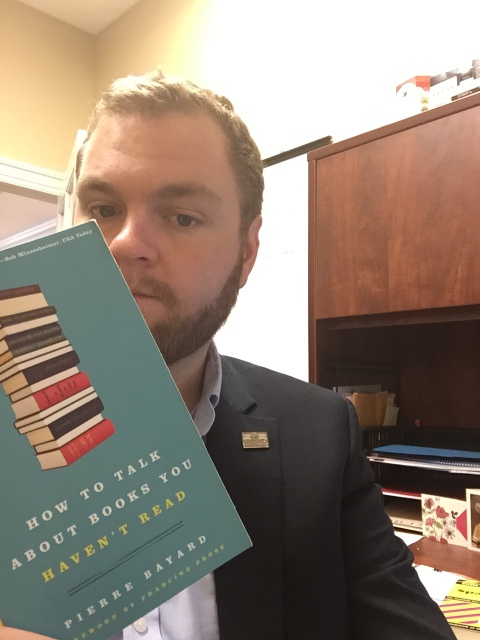 Most of us long for a quiet week between Christmas and New Year’s Day, except for the sound of the mailbox being filled with year-end donations.
Most of us long for a quiet week between Christmas and New Year’s Day, except for the sound of the mailbox being filled with year-end donations.
If you have a bit of spare time in the next day or two, be sure to check out these links for some gifts of knowledge, courtesy of some super smart, dedicated, and attentive people in the nonprofit sector. These are all great resources to have and think about.
- 15 Lessons for the Nonprofit Sector We Learned in 2015
Nonprofit with Balls - Week of Freebies! Multi-Channel Campaign Fundraising Worksheet
Nonprofit Marketing Blog - Free Webinar: 10 Tips for Impact Without Burnout
Wild Apricot - Mapping Out Your Donor Communications Plan for 2016
John Haydon’s Blog - 20 Standards: How We Accredit Charities
BBB Wise Giving Alliance - Lobbying Do’s and Don’ts for Nonprofits
Florida Nonprofit Alliance - 15 From 2015: Important Nonprofit Governance Stories
Nonprofit Quarterly
I love a good read. Even better when I can take something away I can immediately use. If you find some recent nonprofit material we should be sharing, email it to Susie(a)CFSarasota.org, and we will post it.
Enjoy the last few days of the year, and thank you for the difference you make.
-Susie Bowie
Community Foundation of Sarasota County
Will Your New Giving Challenge Donors Come Back?
November 19, 2015
Months after the Giving Challenge, we still marvel at the number of new donors who came forward to support organizations they did not donate to in last year’s event. According to Penelope Burk, CEO of Cygnus Applied Research and author of “Donor-Centered Fundraising” and “Donor-Centered Leadership,” it’s pretty likely that first-time donors will not give again. Why? We don’t always do the right things to make them feel good about their first gift.
The Community Foundation of Sarasota County and The Patterson Foundation invest heavily in the Giving Challenge with the hopes that gains made in a 24-hour period will continue to nurture and sustain participating nonprofits for many years to come.
According to Burk’s research, 87% of donors said they needed only three things to give again:
- To be acknowledged in a prompt and meaningful way.
- For their gift to be assigned to a specific purpose.
- Communication about what the gift accomplished or helped to accomplish.
5 Penelope Burk Tips for Thanking Donors:
Burk says, “A great thank you letter can carry a donor into a greater commitment.” Donors consistently said that being thanked was the single most important communication they ever receive from nonprofits.
- It shouldn’t be more than one paragraph long.
- Stop hand-writing a crossed out “Dear Mr. and Mrs. Wilson” for the more familiar “Jerry and Judi.” Donors are likely to think you made a mistake and didn’t bother to print a new letter, Burk says.
- Consider the impact of the highest level volunteer at your organization, a board member, calling to thank a donor for her first-time gift. 92% of donors said they would give again if a board member called to thank them. (And imagine how fulfilling this fundraising role can be for the board member who is uncomfortable asking for money.)
- The sincerity of your thank you letter is everything. An informative thank you letter full of programmatic details can be icy; be genuine instead.
- Write using “you” instead of “your” to emphasize the donor instead of the donor’s money.
Other donor-centered advice from Penelope based on data from her extensive research:
- Every organization’s mission out there is “worthy.” Successful organizations move beyond the “worthiness” factor in their appeals and thank you letters.
- Consider the cumulative impact of making one call each morning to a donor (only to thank them) and one in the late afternoon. Starting and ending your day like this can create unlimited potential for future gifts.
- Donor recognition didn’t make it to the top three factors driving donor loyalty and more generous giving over time. Think about it.
- In many cases, an organization can get a first gift by selling its brand. After that, it’s about showing your philanthropic investors they have a good return on their investment.
Many first-time gifts were made on September 1 and 2. With the strength of our nonprofit community and so many committed staff and board members out there, we know we do a lot of things right. Our continued message: let’s make sure the impact of the Giving Challenge lasts far beyond the 24-hour success we experienced and read about.
Penelope Burk visited Sarasota on November 18 for a special session with nonprofit leaders, a partnership of the Community Foundation of Sarasota County, U.S. Trust, and Merrill Lynch.
Beyond 24 Hours: 3 Simple Plans to Make the Most of Your Giving Challenge Success
September 23, 2015
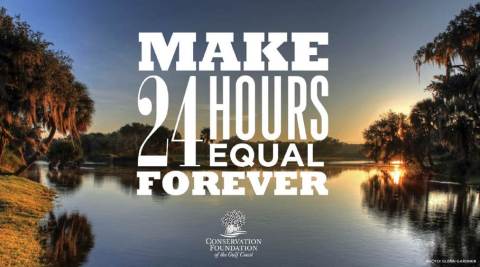
A Giving Challenge campaign that garnered attention from the beginning–and was ultimately selected by a local panel of media judges as one of two Best Overall Campaign recipients–belonged to the Conservation Foundation of the Gulf Coast.
“Make 24 hours equal forever” was its very apropos call to action, considering the organization’s work to protect the environmental character, biodiversity and natural integrity of Florida’s Gulf Coast.
But beyond this mission, we can’t help but love its implications for every organization that took such time and effort to prepare for a record-breaking day of giving in Florida on September 1 and 2.
By now we all have the numbers firmly engrained into our consciousness. In just 24 hours, more than 36,400 individual donations were made to 449 local nonprofits serving Sarasota, Manatee, Charlotte, and Desoto counties yielding $6.7 million from online gifts, matching funds from The Patterson Foundation, and funding from the Community Foundation of Sarasota County, William G. and Marie Selby Foundation, Manatee Community Foundation, and the Knight Foundation.
Long after the media attention, Donor Lounge fanfare, and Leaderboard addiction melt away, we have opportunities of a nonprofit lifetime in front of us.
On this first week of Fall, it’s a perfect time to consider how we can harvest the Giving Challenge and its treasures for all they are worth. Here are three plans your team should be jotting down furiously, while all of this is fresh and exciting.
-
Your plan for retaining the donors who contributed to your organization in the Giving Challenge.
Whether your organization had one new donor or hundreds of new donors, don’t let them be “first and only” gifts. Let’s also consider the long-time supporters who gave during the Challenge. Going forward, how will your nonprofit make sure these donors feel appreciated, are engaged, and give again? For first-time donors, getting that second gift is both a challenge and an opportunity. Meet it! -
Your plan for sharing the impact Giving Challenge donations will make.
I bet you have a plan for how your organization will spend the funds it raised in the Giving Challenge. How will you share the impact those dollars will make on real people, on animals, on important issues, or our environment? When donors can see their gift tied to a real result in the community, they are more likely to give again. Consider videos, newsletters, media relations, your website, social media–all of the different ways you can share the outcome created by so much generosity. -
Your plan for harvesting what you learned.
Every time we host the Giving Challenge, the Community Foundation of Sarasota County learns a little more about our internal capacity, what we could do better, what worked really well, what surprised us, how we could be more efficient or effective using technology differently. We capture these comments from our team members and from external feedback and use them in multiple ways. We know there are similar nuggets about your team and about the fundraising/communication strategies you tried. Apply them to your work throughout the year, outside of the Giving Challenge, to build your fundraising strength and experience.
Thousands of people were part of the $6.7 million success our community owns. We owe it to them and to the important missions that were part of the Giving Challenge to carry that success with us into the future.
-Susie Bowie
Community Foundation of Sarasota County
The countdown clock on the Giving Challenge website tells me we have less than 3 days until the 24-hour giving “extravaganza” we’ve been waiting for officially begins.
Here are some closing thoughts about exploring new possibilities in giving, brought to you by the letter “r.”
-
Represent community.
Be an active role model in creating community. Be complimentary of what others are doing. We’re all in this together. See another organization doing well in the Giving Challenge? Imagine what its success will mean for the people, places, or animals that benefit from its mission.Two people who have been particularly active on The Giving Partner’s Facebook page sharing positive commentary about other organizations: Carisa Campanella of Neuro Challenge Foundation and JoAnne DeVries of the Hearing Loss Association of Sarasota. What nice examples they have set for building community online.
-
Respect that donors are all different.
It’s true that some donors choose to give to animal causes rather than those serving people. Some give to education, some to the environment. Some donors give to the same organizations year after year. Other donors give to a different organization every year, depending on where they can maximize their dollars. One reason philanthropy works in our community is because we have so many diverse interests when it comes to social causes. Respecting these differences will lead to more giving for all of the missions we care about.As you see the Leaderboard fill up with donations, remember that each one is there because one person deeply cares about making the world better in a certain way. We should celebrate that.
-
Resist the urge to compare your campaign to others.
Be proud of what your organization is accomplishing. Money for your mission is good! But so is bringing your team together, building an online community around your work, making more people aware of the services you offer, growing the fundraising participation of your board, appreciating your volunteers…Have you moved the needle in any of these areas? That’s success. If you set your target too high, that’s okay too. You learned what’s possible and what to tweak in your future fundraising efforts.
-
Recognize your people.
I bet you didn’t do it alone–we hope you didn’t do it alone. Donors will give. Social media ambassadors have been liking and sharing your posts on Facebook or Twitter. Others have helped you plan and execute your campaign. Whether you celebrate digitally or at your office, take the time to thank people for being part of your organization’s success, and most importantly, share what this success will mean for the people, special places, or animals you serve. -
Reveal yourself as a new donor!
What if each nonprofit staff member, volunteer, or board member gives to her own organization and to an organization she hasn’t supported before? You too can be part of The Patterson Foundation’s generous matching dollars, up to $250 when you give to a nonprofit as a new donor! Go to http://www.GivingPartnerChallenge.org to find the 449 participating nonprofits.
See you on September 1 & 2 from noon to noon!
-Susie Bowie
Community Foundation of Sarasota County
What Sesame Street Can Teach Us About the Giving Challenge
August 12, 2015
 I just read a fun piece on Next Avenue called “5 Sesame Street Lessons We Need Again As Adults” by Bryce Kirchoff. Loved it. And of course I thought about our community’s online day of giving on September 1 and 2 from noon to noon.
I just read a fun piece on Next Avenue called “5 Sesame Street Lessons We Need Again As Adults” by Bryce Kirchoff. Loved it. And of course I thought about our community’s online day of giving on September 1 and 2 from noon to noon.
Here are Kirchoff’s five big Sesame Street lessons with a little Giving Challenge commentary added. (Click here if you need some Sesame Street video time.)
1. Put down the ducky if you want to play the saxophone.
Kirchoff reminds us that on Sesame Street, Ernie actually has to put down his favorite rubber ducky if he wants to play the saxophone. It’s not always possible to do something new or to do something well until we make the space for it, right? Consider what you might need to put down in the next couple of weeks to promote a Giving Challenge campaign with the results you’re seeking. Better yet, can you combine it with an existing goal or effort to concentrate your success?2. A sense of adventure never gets old.
Adventures cover new territory and give us new experiences. So put on your field boots and a hat. Bring your butterfly net. The Giving Challenge is a chance to be adventurous with philanthropy. Plan thoughtfully but be flexible. Dress right for the occasion and lay the ground work, but build in a sense of excitement about the unknown!3. Friends Matter.
Looking for new donors to give to your nonprofit for the $250 matching opportunity from The Patterson Foundation? Social campaigns are all about your friends and their friends. Your friends are your volunteers, board members, clients, vendors, family members, media partners. Reach out to them. Invite them to share your posts, host a gathering, follow the Leaderboard, make an appeal to 5 people they know, share, give, be a vital part of your campaign. When you let friends know how much they matter, they really want to help.4. Celebrate Yourself.
September 1 and 2 is an AMAZING time to celebrate the good things your organization makes possible in this community. It’s not about what you do, but what impact you are making. To celebrate yourself, use your Giving Challenge messaging to tell stories about the lives you have improved and to share some data about positive changes resulting from your work.5. When All Else Fails, Dance.
Think about movement and music. Consider how contagious they are. We’ve said it before, but when you have some fun with your campaign, and when everything is orchestrated with planning in mind, things flow. At the end of that 24-hour period on September 2 at noon, we hope you dance. Be thrilled with what you accomplished, whether it’s more funding, more Facebook fans, a more engaged board, a new partner, or a team effort that brought your volunteers together around your mission.
The 2015 Giving Challenge is made possible by the Community Foundation of Sarasota County and The Patterson Foundation with support from the William G. and Marie Selby Foundation, John S. and James L. Knight Foundation, Manatee Community Foundation, and the Herald-Tribune Media Group. Follow the Giving Challenge using #GivingChallenge15 and online at http://www.givingpartnerchallenge.org.
10 Predictions for the 2015 Giving Challenge
July 31, 2015
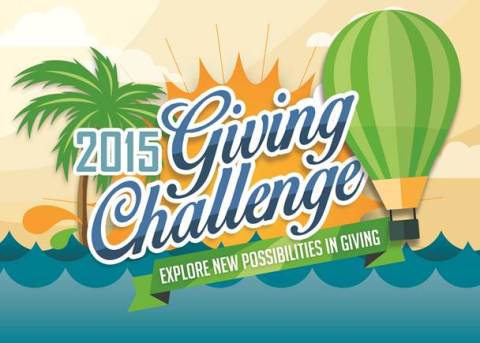 Every year we are asked how much money we think local nonprofits will raise in the Giving Challenge through donations, matching dollars, and grant incentives combined.
Every year we are asked how much money we think local nonprofits will raise in the Giving Challenge through donations, matching dollars, and grant incentives combined.
A really easy answer: we don’t know. The uncertainty is both exciting and anxiety provoking, isn’t it? Anything can happen in 24 hours!
With this year’s focus on new donors from The Patterson Foundation and with other new grant opportunities offered through the Community Foundation of Sarasota County, William G. and Marie Selby Foundation, Manatee Community Foundation, and the John S. and James L. Knight Foundation, the possibilities are amazing to consider.
And although the total amount of money raised can understandably be a focus in the Giving Challenge, so many other positives that benefit our community’s diverse organizations are generated from their strategies and planning.
Here are 10 predictions for the 2015 Giving Challenge:
- Donors will see that a $25 gift can really make a difference.
- Videos that make us laugh, evoke profound emotions, showcase familiar faces, and feature impact will be created and will spread across social media platforms like wildfire.
- Board teams will come together in unprecedented numbers to actually have fun planning their fundraising campaigns.
- Some nonprofits will co-design unbelievably creative partnerships that will result in new possibilities for working together in the future.
- Business owners will align with nonprofits like never before to help them raise more money, meet more people, and gain more traction.
- Nonprofits will use the Giving Challenge to boost their current fundraising campaigns.
- Donors will give to organizations they have never before supported, and those organizations will start developing meaningful relationships with them.
- Clients of nonprofit programs and their families will be inspired to donate and will encourage others to do the same.
- Our community will be know as the “Region of Heartfelt Thank You Notes.”
- #GivingChallenge15 will dominate Twitter, Instagram and Facebook.
What do you predict for your organization? We hope that enjoying your Giving Challenge campaign planning is in the mix!
Have a great weekend.
-Susie Bowie
Community Foundation of Sarasota County


